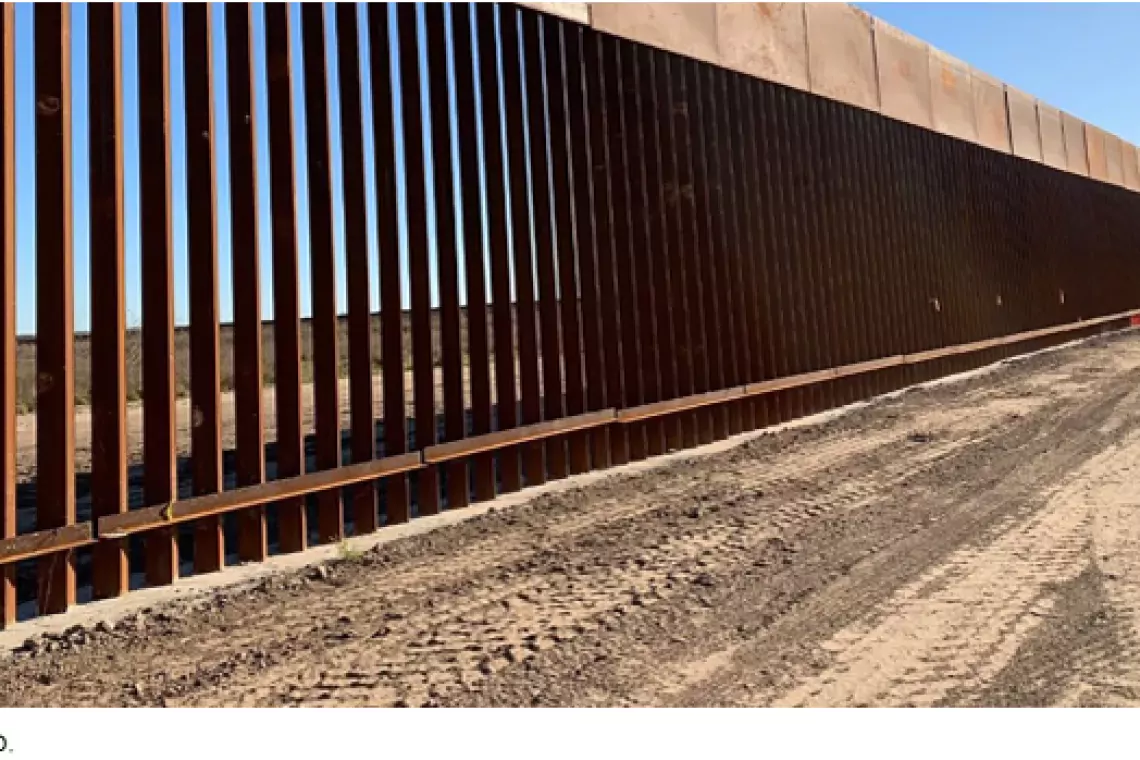Fentanyl Continues to Be the Leading Cause of Overdose Deaths. What’s Being Done to Combat Trafficking into the United States?
Fentanyl continues to be the primary cause of drug overdose deaths in the United States. Even a very small amount of fentanyl (2 milligrams—the size of a few grains of sand) can cause a lethal overdose.
Much of this narcotic is being trafficked into the United States from Mexico, according to federal law enforcement. As part of efforts to combat trafficking, the Department of Homeland Security is targeting not just fentanyl itself, but also the chemicals and equipment used to make it that are largely coming from China.
Today’s WatchBlog post looks at our new report on efforts to stop illicit fentanyl from entering the United States.
Fentanyl Pills Seized by U.S. Customs and Border Protection
Image

The human costs of fentanyl and how it gets across the border
Fentanyl is a powerful man-made opioid prescribed by doctors to treat severe or chronic pain. A hundred times more potent than morphine, illicit fentanyl is often combined with heroin, cocaine, or methamphetamine. The drug is sold illegally in pill form, powder, or liquid.
Last year, synthetic opioids—primarily fentanyl—accounted for 60% of all overdose deaths in the United States. That’s about 48,000 people. Over the last several years (fiscal years 2021-2024), federal law enforcement under DHS captured or helped to capture more fentanyl, as well as the chemicals and equipment used to produce fentanyl, than before. This includes roughly:
- 130,000 pounds of illicit fentanyl
- 327,000 pounds of fentanyl precursor chemicals
- 9,900 pieces of equipment
Where is illicit fentanyl coming from and how is it getting here? As stated above, most of the fentanyl, chemicals, and equipment used to make it are coming in from Mexico or China. About 80% of fentanyl was seized in the southwest border region. Most of the illicit drug is coming across U.S. borders in passenger vehicles. The chemicals used to make fentanyl are largely being transported via commercial vehicles like cargo trucks, ships, and planes. And nearly half of the equipment used to make fentanyl pills is being sent by mail.
Customs and Border Protection Inspections of Cars at Port of Entry and Immigration Checkpoints
Image

What’s being done to stop fentanyl trafficking?
DHS and its agencies play a key role in national efforts to combat trafficking of fentanyl and the chemicals and equipment used to make it. For example, DHS’s Customs and Border Protection inspects incoming travelers, vehicles, and shipments and conducts patrols along the borders. And multiple DHS agencies investigate the illicit movement of drugs in and out of the country and the bad actors—including drug cartels—distributing them.
As part of these efforts, agencies use intelligence and other information to identify and target higher-risk travelers, vehicles, and shipments. Targeting has contributed to at least 2,530 fentanyl-related seizures at air, land, and seaports, from fiscal years 2021-2024.
DHS’s agencies have also conducted special operations to disrupt fentanyl-related supply chains. Special operations typically include providing more personnel and resources to help target specific border locations. These operations have contributed to an increase in the seizure of fentanyl in fiscal years 2023 and 2024 compared to the prior two years.
How is DHS measuring the success of its efforts? DHS and its agencies analyze and report out on their efforts to combat fentanyl trafficking. For example, DHS publishes data annually on the number of drugs it has seized, among other things. This is important information to have when trying to assess which efforts are working well and how they could be improved.
But we found that DHS’s ability to fully assess the effectiveness of its efforts is limited. For example, DHS hasn’t set performance goals and measures for its efforts. This makes it hard to know if DHS efforts are working to stop the flow of fentanyl. We made recommendations on this and other ways DHS could improve such efforts.
To learn more about DHS’s work to stop fentanyl trafficking into the United States and our recommendations, read our full report.
- GAO’s fact-based, nonpartisan information helps Congress and federal agencies improve government. The WatchBlog lets us contextualize GAO’s work a little more for the public. Check out more of our posts at GAO.gov/blog.
- Got a comment, question? Email us at blog@gao.gov.
GAO Contacts
Related Products

GAO's mission is to provide Congress with fact-based, nonpartisan information that can help improve federal government performance and ensure accountability for the benefit of the American people. GAO launched its WatchBlog in January, 2014, as part of its continuing effort to reach its audiences—Congress and the American people—where they are currently looking for information.
The blog format allows GAO to provide a little more context about its work than it can offer on its other social media platforms. Posts will tie GAO work to current events and the news; show how GAO’s work is affecting agencies or legislation; highlight reports, testimonies, and issue areas where GAO does work; and provide information about GAO itself, among other things.
Please send any feedback on GAO's WatchBlog to blog@gao.gov.




